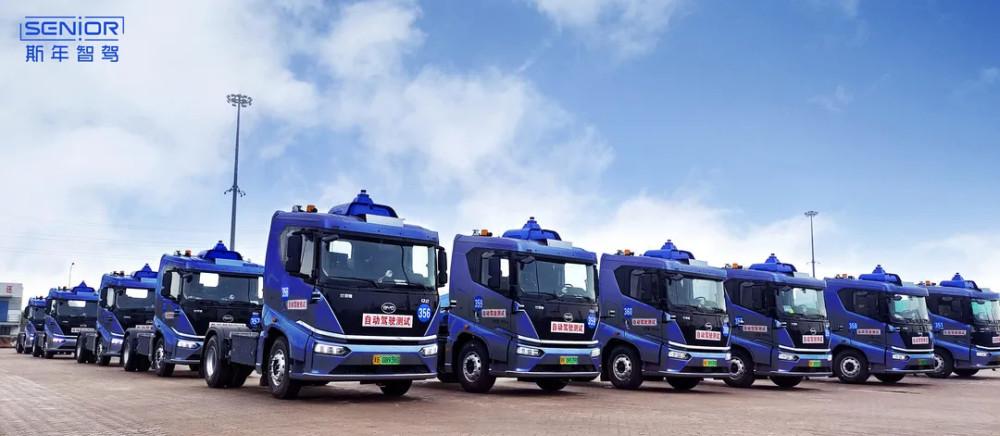Reporter Gong Mengze
On December 21, Beijing Sinian Intelligent Driving Technology Co., Ltd. (hereinafter referred to as "Si Nian Intelligent Driving") received a round of financing of 100 million yuan, led by ByteDance, and the old shareholders such as GF Xinde, Jinbang Capital and Chentao Capital continued to follow the investment, and Investment Capital served as the exclusive financial adviser. This round of financing will be used for the company's technology research and development, daily operations and market expansion.

According to the data, Si Nian Intelligent Driving was established in April 2020 and is a provider of unmanned driving solutions and operational services focusing on the pan-port field. Previously, Si Nian Intelligent Driving received angel round and Pre-A round financing in May 2020 and February 2021 respectively.
In terms of cooperation layout, in June 2021, Sinian Intelligent Driving and Ningbo Daxie Merchants Terminal signed the world's first L4-level unmanned driverless commercial operation payment agreement; in August 2021, Sinian Intelligent Driving signed an L4-level unmanned commercial operation payment agreement with Tangshan Jingtang Terminal. Taking the lead in obtaining orders for commercial operation of the port is also the difference between Si Nian Zhi Driving and other suppliers. At present, Si Nian Intelligent Driving has deployed nearly 40 vehicles into the normal unmanned operation, and it is expected to gradually remove all safety personnel in 2022, when unmanned driving will greatly promote the cost reduction and efficiency of the port.
He Bei, CEO of Si Nian Zhi Driving, said that in the first half of 2022, Si Nian Zhi Driving is expected to win 3 to 4 domestic port driverless commercial operation orders. In addition, Si Nian Zhi Driving is also actively expanding the international market.
"In response to the call of the national Belt and Road Initiative and new infrastructure, in 2022 we will expand from the seaport to the river port, river port, dry port and foreign ports." This is inseparable from the high degree of replication and expansion of our products. He Bei said that it is expected to expand the pan-port unmanned transportation scene next year, and extend the business to the short barge between ports and the logistics of the trunk line outside the port.
According to the China Water Transport Network, the current cost of truck drivers in domestic port operations accounts for more than 50% of the entire port transportation costs. The port truck driver needs at least an A2 or above driver's license; at the same time, the port 24-hour operation requires the driver to work multiple shifts, which is prone to fatigue driving and other phenomena, resulting in safety hazards.
In this context, port automation has been developed for 40-50 years in the world, and China has been deployed since about 2000, but due to factors such as the high cost of traditional AGV-related supporting facilities, there is still a lot of room for improvement in the degree of port automation. In addition, there are many technical difficulties in port automation. For example, the scene change of the port is calculated in hours, the challenge of feature selection and crowdsourcing update is greater; the port requires 7×24 hours of uninterrupted operation, which has very high requirements for day/night, cloud/sun/rain/snow and detection accuracy; the motion model of semi-trailer is more complex than that of passenger cars.
To this end, Si Nian Zhi Driving using laser + camera + millimeter wave + ultrasonic fusion scheme to ensure perception redundancy, to meet the perception of various working conditions in the port, compared with other suppliers, Si Nian Zhi driving unmanned driving system can also adapt to loading and unloading ships, empty container sites and other working conditions, support tire cranes, rail cranes and stackers of collaborative operation, in a number of unmanned mixed docks to complete the normalization of unmanned horizontal transportation.
(Editing by Li Bo)